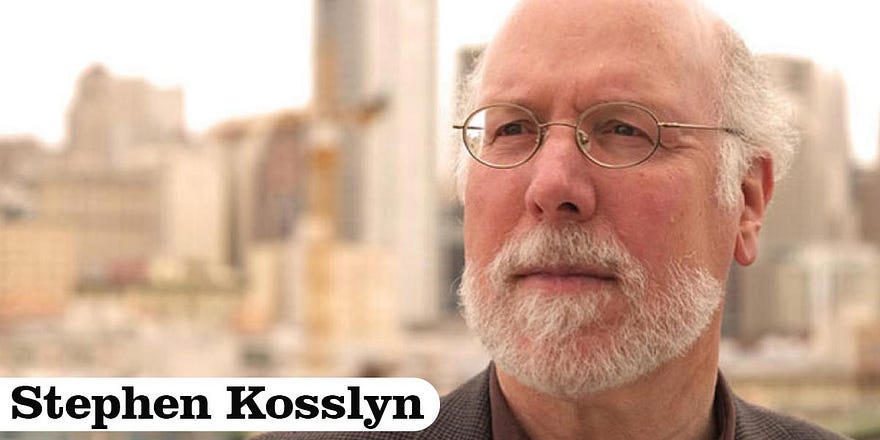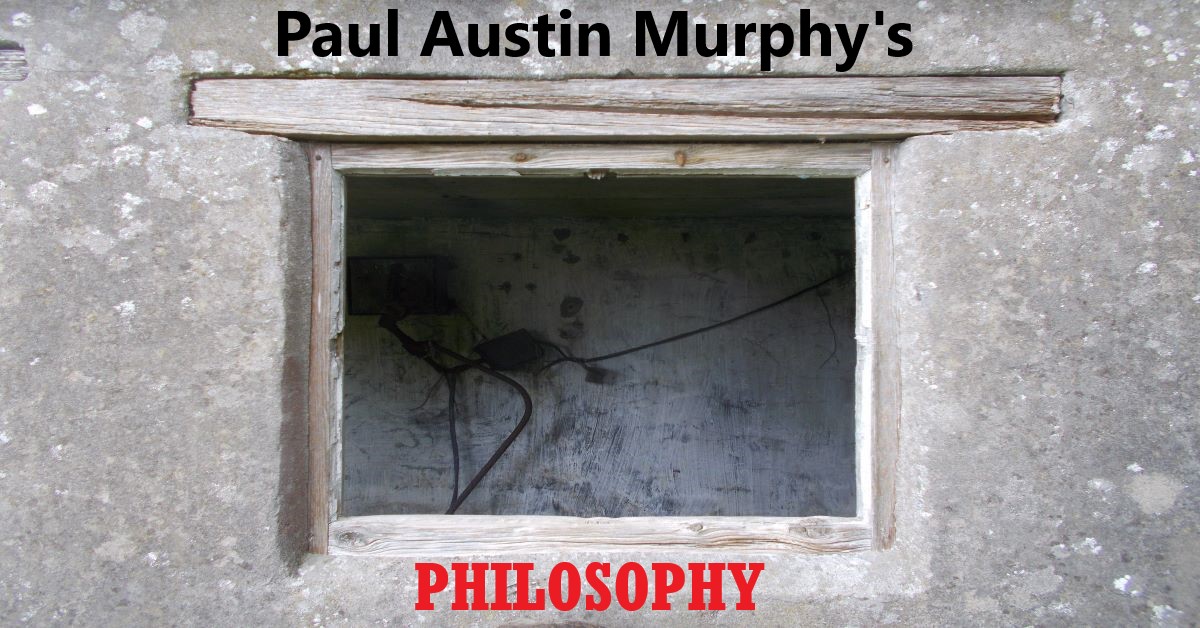Psychologist Stephen Kosslyn tells us that “there are aggregates which produce properties that can’t be predicted entirely from the elements themselves”. He also states: “Events at higher levels can in turn feed back and affect events at lower levels.” More speculatively: “The Ultimate Superset of all living things may have an equivalent status to an economy or culture.” Is Kosslyn right about all — or any — of this?

This essay bounces off three passages from Stephen Michael Kosslyn (1948-). Kosslyn is an American psychologist and neuroscientist who’s known for his work on the science of learning, mental imagery and visual cognition. His work also impinges on philosophical issues and is cited by philosophers.

The following three passages from Kosslyn have been quoted because they have the advantage of being very clear, simple and basic. However, the following commentaries are somewhat critical of Kosslyn’s general take on emergence.
[The quotes from Kosslyn can be found in his ‘A Science of the Divine?’.]
Emergent Properties
“There are many examples in science in which aggregates produce an entity that has properties that cannot be predicted entirely from the elements themselves. Neurons in large numbers produce minds; minds in large numbers produce economic, political, and social systems.”
The kind of emergence described above is usually classed as “weak emergence”. Indeed, the philosopher Mark A. Bedau (who’s critical of strong emergence) once said that “the notion of weak emergence is metaphysically benign”.
Of course, if stated in a bald form, then obviously any object which is made up of other “elements” can’t be identical to any of those elements. However, Kosslyn also says that
“an entity that has properties that cannot be predicted entirely from the elements themselves”.
The important word here is “predicted”.
That word changes everything.
Indeed, on many (or most) definitions, even weak emergence includes the notion of prediction. This is one definition:
“[Weak emergence] is also known as ‘reducible’ emergence. In this form, the emergent phenomena can be traced back to the individual components. This is related to a reductionist philosophy; you can predict and observe higher level phenomena just by looking at individual components.”
The above seems wrong. Either that, or it isn’t a correct characterisation of weak emergence. The suspect clause is this:
“[Y]ou can predict and observe higher level phenomena just by looking at individual components.”
Who has ever claimed that?
Does anyone claim that by simply “looking at” a single component you can “predict and observe higher level phenomena”? What about looking at many or most components?
Finally, what about predicting high-level phenomena after looking at all the individual components?
Despite all that, even if any given X can’t be predicted from it components a, b, and c, it still may be the case that X is nothing but a, b and c. So whether or not we can predict X (or anything about X) from a, b, and c is another matter.
We certainly couldn’t predict X from a alone. And we couldn’t predict X from a and b (or from b and c) alone either.
But what about predicting X (or even a single aspect of X) from a, b and c?
This may (at least partly) depend on how the word “predict” is defined.
In any case, this problem (or simply this issue) is graphically highlighted by the Australian philosopher Frank Jackson (1943-) in the strict context of qualia (see here):
“But it is quite another question whether they must hold that Θ a priori entails everything about our psychology, including its phenomenal side, and so quite another question whether they must hold that it is in principle possible to deduce from the full physical story alone what it is like to see red or smell a rose — the key assumption in the knowledge argument that materialism leaves out qualia.”
This issue is complicated by the fact that Frank Jackson uses the word “entails”. That is, Jackson doesn’t actually mention anything about prediction.
Basically, a, b and c can entail X without anyone being able to predict X (or any aspect of X) from a, b and c. That said, perhaps Jackson implies some kind of prediction when he wrote that
“it is in principle possible to deduce from the full physical story alone what it is like to see red or smell a rose”.
Yet this would be very difficult — even in cases which have nothing to do with qualia or consciousness.
As the American philosopher Saul Kripke argued (at least indirectly) in the 1970s (see ‘A posteriori necessity’), no one (in a very hypothetical scenario) could have predicted the properties of water from studying a single H₂O molecule — or even from studying a group of such molecules when found together. (In the case of there not being enough molecules to display properties such as wetness, transparency, etc. to a human observer with sense organs.) Thus, the aggregate properties of H₂O (i.e., water) are known a posteriori — even if H₂O molecules have a necessary (physical) relation to such properties.
So it can still be stated that H₂O molecules do indeed entail such properties.
All this may even apply to a pile of bricks which are later formed into a house.
So let’s simply pretend that this brick house is literally made entirely of bricks. (The fact that no house is made entirely of bricks doesn’t change the story here.)
Of course, there is more to a house than its bricks. If that wasn’t the case, then just observing — or even analysing — a pile of bricks would enable us to know that they could later constitute a house. Yet that too could actually be done. However, it couldn’t be done unless the theorist had already seen a brick house, already experienced the building of such a house, etc. So even though the house, when built, is indeed made entirely from the bricks in the pile, this couldn’t be predicted without extra (or a posteriori) knowledge (i.e., knowledge above and beyond the bricks and the pile of bricks).
Thus, the pile of bricks may not even entail a/the house made of bricks.
So the house of brick still has properties which the individual bricks don’t have. Indeed, it has properties which the pile of bricks doesn’t have. However, the house of brick isn’t thereby ontologically weird, mysterious or (strongly) emergent.
This shows that this (as it were) epistemic deficiency (at least when it comes to this house made of bricks) has no weird or mysterious ontological implications.
Of course, one exception to this line of reasoning is deemed to be the case of consciousness or qualia — as Frank Jackson pointed out in the passage above.
Downward Causation
“Events at higher levels — levels where emergent properties become evident — can in turn feed back and affect events at lower levels. For example, chronic stress, a mental event, can cause parts of the brain to become smaller. Similarly, an economic depression or the results of an election affect the lives of the individuals who live in that society.”
It must be stated right from the start that the passage above simply assumes that there are emergent properties. Thus, only then does Kosslyn tackle what he calls “downward causality”.
There may be a problem here.
Kosslyn says that “chronic stress” (which he classes as a “mental event”) can “cause parts of the brain to become smaller”. So it’s important to stress here that a mental event (such as chronic stress) may also be a physical part of the brain — and also the body! - to begin with.
So, in terms of chronic stress, this is physically embodied (or instantiated) in the brain and the body — even if it’s still deemed to be a mental event.
This may — or does — also mean that “parts of the brain” and body are affecting other parts of the brain and body. Alternatively, Kosslyn’s words may — or do — mean that some given x can fall under two different modes of presentation. However, this modes-of-presentation idea isn’t identical to Gottlob Frege’s notions of sense and reference. It refers, instead, to a mode of presentation from the the “first-person perspective” and a mode of presentation from the “third-person perspective”.
More broadly, then, Kosslyn’s “events at higher levels” are as physical as anything else. However, it’s just the case that such events aren’t identical to any of the single “elements” which give rise to them.
So all this may be a case of the physical affecting the physical, rather than the non-physical affecting the physical. And, if that’s the case, then this may not be a case of downward causation at all…
Or, at the very least, the words “downward causation” need qualifying.
Kosslyn also mention an “economic depression” and the “result of an election”.
An economic depression and the result of an election are both seen abstractly. That is, all the precise, many and individual physical details which can account for an economic depression or election result can be factored out. That will be done in order to abstract down any given X to something more basic and simple. That abstracting process, then, is essentially linguistic and due to the (human and cognitive) requirement for conceptual simplicity. However, reifying such an abstract entity (such as an economic depression of the result of an election) may well make it seem to have a nature which encourages us to think in terms of it bringing about some kind of downward causation.
Yet an abstraction isn’t a physical phenomenon.
More mundanely and linguistically, the words “economic depression” make up an abstract noun (or, at the least, an abstract noun prefixed with an adjective), and the same is true of the words “election result”. But this is just a factor of language and the cognitive utility of abstract terms. It certainly doesn’t tell is that something non-physical (or emergent) is affecting something physical.
Thus, thinking in terms of abstract entities (i.e., at the same time as not fully realising that) makes it seem that a non-physical phenomenon is taking part in a process of downward causation. Yet this is to believe that these abstract terms in language are real things — even if these things are deemed to be non-physical in some way and also responsible for cases of genuine downward causation.
So since philosopher Mark A. Bedau was mentioned after the first passage at the beginning of this essay, let’s quote him again. However, this time Bedau is being suspicious of strong emergence. He writes:
“Although strong emergence is logically possible, it is uncomfortably like magic. How does an irreducible but supervenient downward causal power arise, since by definition it cannot be due to the aggregation of the micro-level potentialities? Such causal powers would be quite unlike anything within our scientific ken. This not only indicates how they will discomfort reasonable forms of materialism. Their mysteriousness will only heighten the traditional worry that emergence entails illegitimately getting something from nothing.”
Of course, downward causation and strong emergence aren’t one and the same thing. That said, Bedau does connect them together (as does Stephen Kosslyn himself) in the passage above. That is, that which strongly emerges is also deemed to have “supervenient downward causal power”. Thus, in our examples, chronic stress, economic depressions and elections results are deemed to be strongly emergent phenomena which, nevertheless, have downward causal power. Yet, as hopefully shown, these examples are simply linguistic or conceptual abstractions. And such things can’t have downward (or upward) causal power. However, whatever collective or individual physical elements these abstract terms indirectly refer to, will indeed have causal power. Yet none of them are individually or even collectively (strongly) emergent at all.
So, if anything is emergent, then it’s the linguistic (or conceptual) abstractions we use every day (such as “flock”, “stress”, “election result”, “mind”, “consciousness”, etc.). Yet these terms won’t help much because such abstractions alone can’t have downward (or upward) causal power.
The Ultimate Superset’s Downward Causal Powers
“The Ultimate Superset (superordinate set) of all living things may have an equivalent status to an economy or culture. It has properties that emerge from the interactions of living things and groups of living things and in turn can feed back to affect those things and groups.”
Stephen Kosslyn is clearly stretching things out here. However, it’s not clear if he sees it that way.
Firstly, what is the “Ultimate Superset (superordinate set) of all living things”?
It’s not clear what properties this Ultimate Superset has — or even could have.
Even if this Superordinate Set is taken purely as an aggregate of all its members, that would still be a difficult thing to imagine — or even conceive. What’s more, the alternative of taking this Superset (see ‘Subset’) as being something over and above all its members will be even harder to conceive.
Perhaps acts of conceiving aren’t relevant in set theory.
It’s also odd that Kosslyn refers to “the interactions of living things and groups of living things”. Now isn’t it the case that living things make up a unbelievably small part of the Universe — or at least a tiny part of the observable (or known) universe? And even when it comes to our own planet, there is still more to Earth than “living things”.
So is Stephen Kosslyn essentially talking about himself and other human beings here? In other words, is this another example of anthropocentrism?
My flickr account.










No comments:
Post a Comment